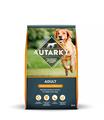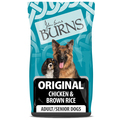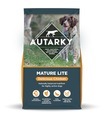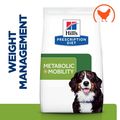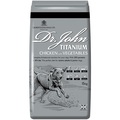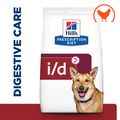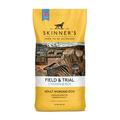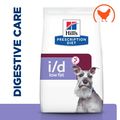One of the big crazes sweeping the world of dog ownership is the BARF diet. The acronym stands for 'Biologically Appropriate Raw Food' or 'Bones And Raw Food', depending on who you ask, which should give you some idea of what it entails: plenty of uncooked, unprocessed food for your dog to enjoy.
The idea appeals to many dog owners because of all of the health benefits it can have for your pet. In the wild, dogs were largely carnivores. They hunted prey in packs - much like modern wolves do now - and ate the entirety of whatever animal they brought down. They would also scavenge for fruits and vegetables that grow in the wild, as well as eggs.
This should all make sense so far; after all, most canned and processed foods contain meat and a few vegetables. But if they are already sticking to this basic diet, why is there any need to opt for the BARF diet? There are several reasons.
The first is that canned or dried food will have been cooked in some way. Obviously dogs do not cook food in the wild, so this is quite a major difference. The second is that processed food is typically bulked out with carbohydrates, usually from grains such as wheat. These would not factor in a wild dog's diet.
Why does all this matter? Put simply, your dog has evolved to eat certain things. Dogs are good at digesting raw meat, bones, vegetables and other such foodstuffs. As such, cooked food that is high in carbohydrates is not the ideal diet for your dog. It will give them inconsistent energy and potentially contribute to health problems in later life.
In order to give your dog food that is optimised specifically for their unique digestive system, it might be best to opt for the BARF diet. This has proved to be popular with many dog owners, but it can be a confusing concept at first. Many people understand the principles of the diet, but are unclear about what to actually feed their pets.
Here are some of the things you can opt for with the BARF diet. There are no set recipes, as such; instead, here are the components of a standard BARF meal and the options you can choose from for your dog.
Composition
Every BARF meal should be composed from certain food groups: meat, offal and fruits/vegetables, all blended together in a food processor, and bones. Many dog owners add in a few other nutritional supplements as well, to make sure they are fulfilling all of their dog's nutritional requirements.
The composition of each meal should be roughly 60 to 80 per cent meat, five to ten per cent raw fruits and vegetables and the rest should be equal parts offal and bone. Some owners choose to use raw meaty bones (more about them later) instead of meat; if this is an option you want to go for, then don't add any extra bones and opt for more fruit and veg instead.
Meat
Most meats are basically fine for your dog to eat. Beef, pork, chicken and turkey can all be fed to your dog with no issues. Lamb is also fine, but it is very rich and will probably need some of the fat trimming off it, so use it sparingly. Avoid cured meats like bacon or salami.
Fish is also a good option, although some owners worry about the choking risk of all the small bones so opt for canned mackerel or sardines. You can use exotic meats like kangaroo if you like as well. The important thing to remember is to vary your dog's diet, so don't use the same type of meat for months at a time.
Raw meaty bones
One alternative to meat is to feed your dog plenty of raw meaty bones. These most commonly come in the form of chicken wings or necks, which you can feed to your dog whole. These provide them with essential bone marrow and other useful healthy nutrients. You can also use things like pigs' feet or oxtails.
Bones
If you are just feeding your dog raw meat, you need to give them bone as well. These should never be cooked. Avoid any bones that are likely to splinter. They should have a good amount of meat on the ends, so your dog can spend a good amount of time gnawing. If you are worried about their teeth, you can always buy ground bone dust and include that in their meal.
Offal
Heart, lungs, liver, kidneys, tripe - it might not seem appetising to us, but it is a great source of nutrition for your dog. These are very, very rich, so can cause stomach upsets if you aren't careful. Many owners choose to skip this aspect of the BARF diet most of the time, feeding offal to their dogs just once or twice a week.
Fruits and vegetables
Here is where you have to be very careful, as some of these can be toxic to dogs. Onions, garlic, grapes, raisins, sultanas and mushrooms can all cause your dog serious harm, so avoid them at all costs!
Most berries, apples and bananas are fine, as well as broccoli, carrots, red peppers, cabbage and many other vegetables. Do your research before you include anything in your dog's meal that you are not sure about.
Written by: Hannah

